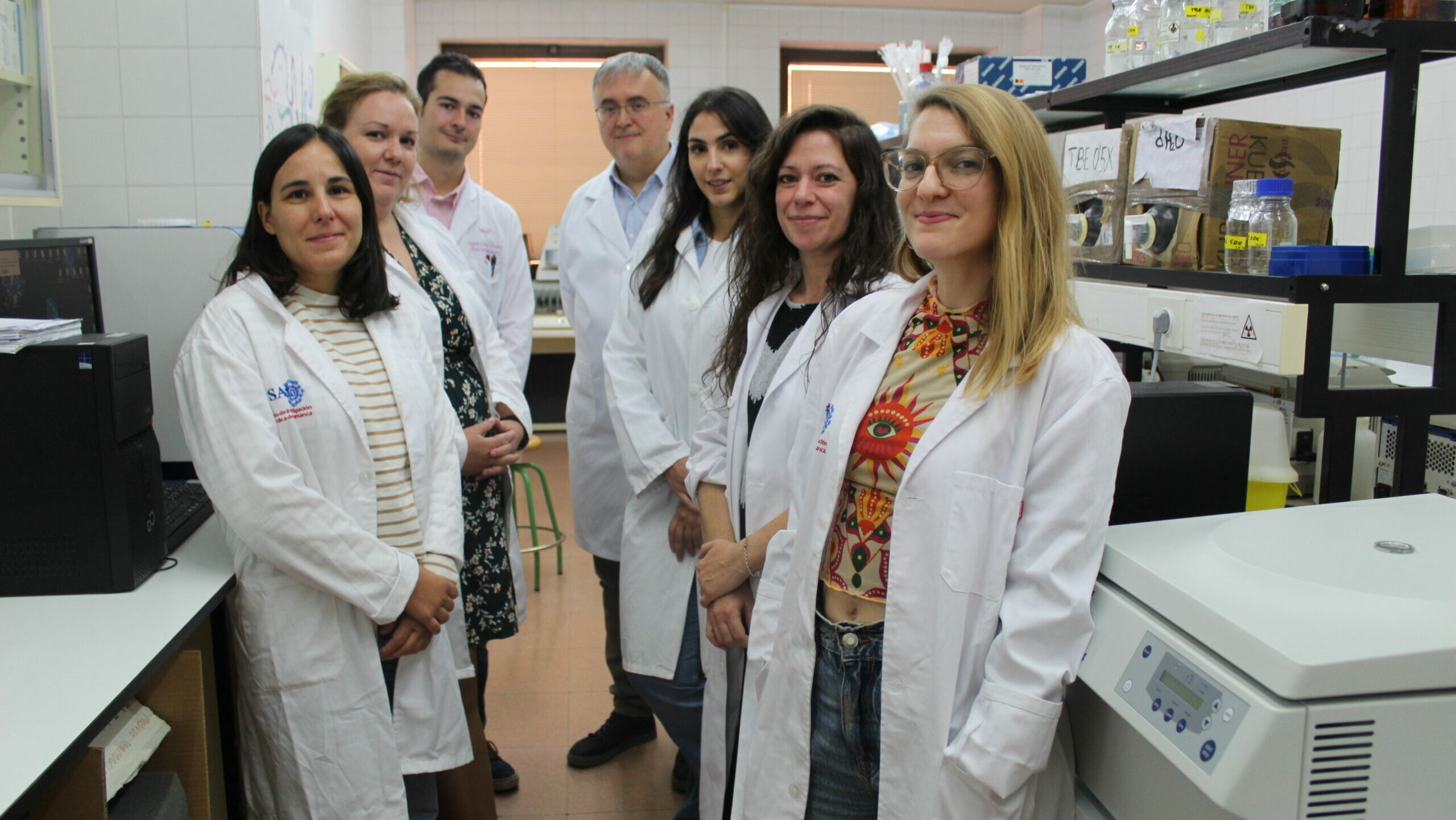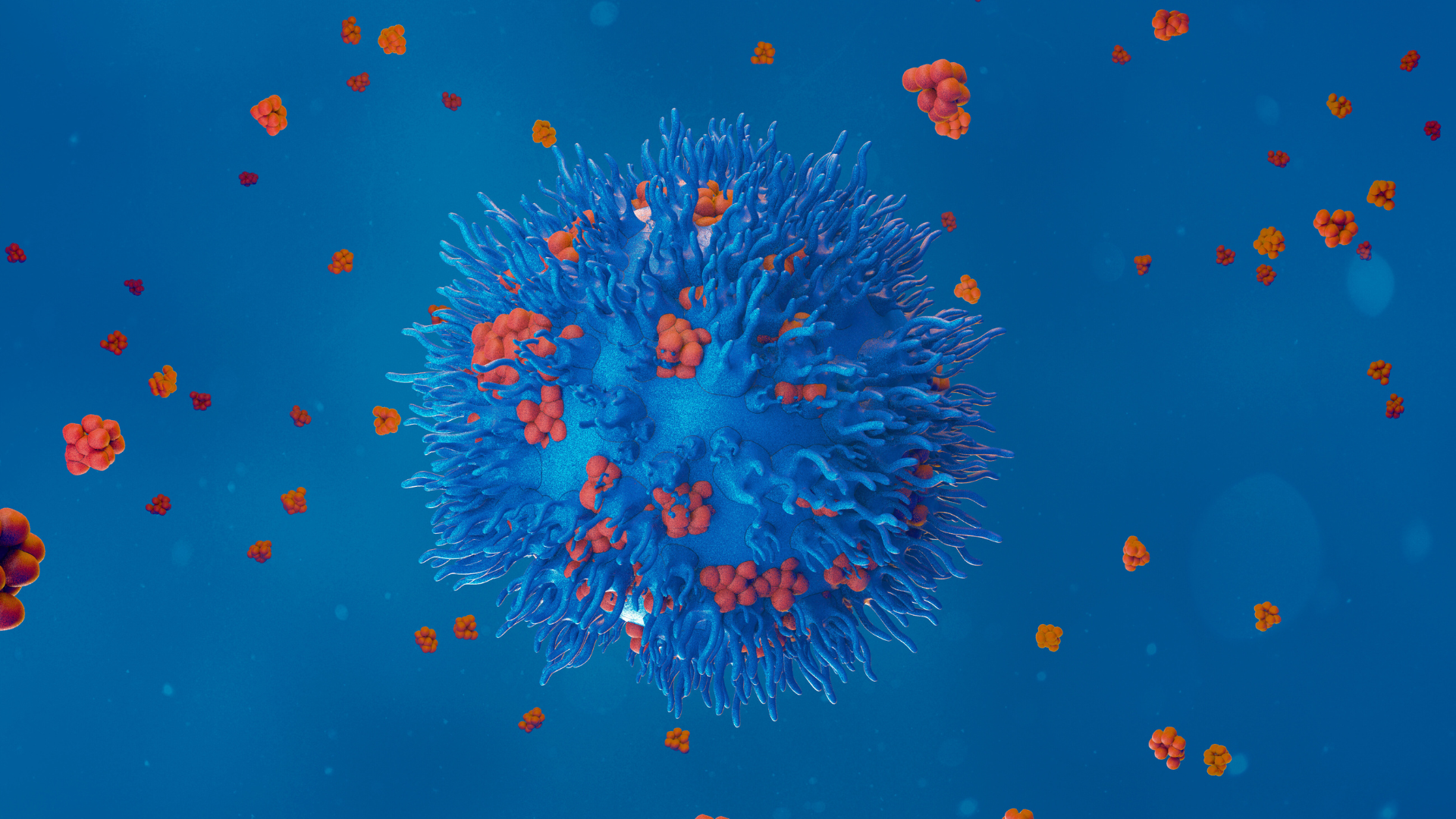Researchers from IBSAL, USAL and CIBERES, who had already demonstrated the relationship between the spread of the virus from the lungs to the peripheral blood with more severe symptoms in covid-19 patients, are now conducting a pioneering systematic review of other very common respiratory viruses, such as influenza, rhinoviruses and other emerging coronaviruses.
Jesús Bermejo, head of the BioSepsis group that has led the study published in the world’s most important journal in Microbiology, The Lancet Microbe, assures that these results open the way to improve the treatment, prognosis and long-term complications of patients with a severe infection caused by a respiratory virus.
Researchers from the Institute of Biomedical Research of Salamanca (IBSAL), the University of Salamanca (USAL) and the Respiratory Diseases Area of the Center for Biomedical Research in Network (CIBER) have carried out a systematic review on the presence of viremia – dissemination of viral components from the lungs to the blood – in patients with severe respiratory infections, and contrary to what was thought up to now, they have discovered a high prevalence and a direct relationship with the severity of the diseasewith important pathophysiological and clinical consequences in SARS-CoV-2 infection in the short and long term, and most probably also in those caused by other respiratory viruses.
The importance of the study, published in the world’s leading journal in Microbiology, The Lancet Microbe, lies, on the one hand, in the fact that it is a pioneering review at world level on the presence of viremia in other infections beyond covid-19, such as those caused by other coronaviruses, adenoviruses, rhinoviruses, respiratory syncytial virus and influenza. And on the other hand, because these results open the way for the development of further studies to investigate the role of monitoring, prevention or elimination of this viral load in blood to improve detection, treatment, prognosis and long-term complications in patients with severe respiratory infection.
Furthermore, these findings also suggest the need to further investigate the role of viremia in the pathogenesis of long-term extrapulmonary diseases, such as diabetes or autoimmune pathologies.
As explained by Dr. Jesús Bermejohead of the BioSepsis group of IBSAL -The study was conducted by the Ministry of Health of the Castilla y León Regional Government, the University of Salamanca (USAL) and the Higher Council for Scientific Research (CSIC), which has led this international study together with the researcher Ana Tedim and with the collaboration of Swedish researchers from the Sahlgrenska and Danderyd Hospitals of the Karolinska InstituteWe have found that viremia is not a rare phenomenon in patients with respiratory infection, but on the contrary, has a high prevalence, ranging from 10 to 60% depending on the type of virus, and yet we are not assessing it in hospitals.But it is also clearly associated with gravity”.
“Taking this association into account can help us to determine the patient’s trajectory, predict his or her evolution and even be able to administer life support early on in order to achieve greater survival. And it also opens the way to explore new treatments, such as administering antivirals to prevent the foreseeable deterioration of the patient or to attenuate the inflammatory response associated with the presence of viraemia in the blood,” he adds.
Long-term consequences: long-covid
Precisely, this hyperinflammation in patients with covid, as well as other reactions to viremia, such as lymphopenia, activation of coagulation or endothelial dysfunction, had already been extensively studied by this research group during the pandemic, and now they confirm it with other respiratory viruses. But, in addition, “in the long term, there are some consequences that are very relevant”, as the IBSAL researcher points out.
The existing studies included in this meta-analysis confirm an association between viremia secondary to SARS-CoV-2 infection during the acute phase of the disease and persistent covid, “which opens the door to further studies to explore the unanticipated sequelae that may be left by systemic spread of the virus in people with other respiratory infections, such as influenza, and even to assess it as a cause of diabetes in children and other autoimmune diseases”.
Learning from SARS-CoV-2: pioneering BioSepsis studies
During the pandemic, the BioSepsis Group was also a global pioneer, with a publication in 2020, in demonstrating that the presence of virus in blood had the signs of being an important marker of severity, and with this prior experience they set out to test whether this condition also occurred in other respiratory viral infections. To this end, they conducted a preliminary systematic search to identify articles published before May 23, 2024 that reported on viremia during respiratory infections, as well as its association with disease severity and long-term consequences, and host responses, which resulted in the inclusion of 202 papers out of 2448 analyzed one by one.
An exhaustive analysis hitherto unpublished in the medical literature, which, with new studies on which the BioSepsis group is already planning to work, may represent a paradigm shift in clinical practice in the management of patients with respiratory viral infections.This is especially relevant in an era of emerging viruses, as we are now seeing with avian flu, and fundamental to continue raising awareness of the importance of vaccination campaigns, because, as Dr. Bemejo concludes, “viruses can not only harm us in their acute phase, but the jump to blood can worsen our prognosis and have serious long-term consequences”.
Reference article:
Karl Hagman MD,Tamara Postigo MSc, David Diez-Castro MSc, Johan Ursing MD, Jesús F Bermejo-Martin MD, Amanda de la Fuente MSc, Ana Tedim PhD. Prevalence and clinical relevance of viraemia in viral respiratory tract infections: a systematic review. The Lancet Microbe, 2024. https://doi.org/10.1016/j.lanmic.2024.100967




